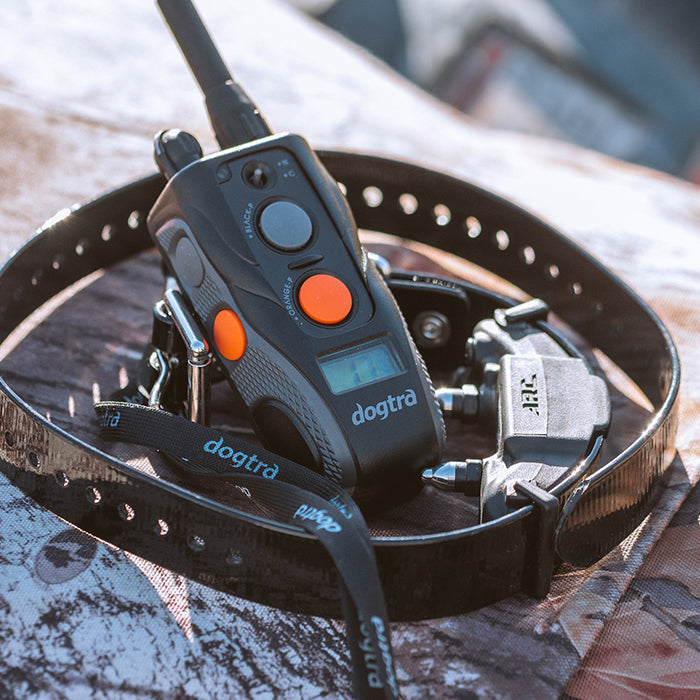MASTERING DOG MANNERS VS. OBEDIENCE TRAINING

Recently, I wrote an article sharing tips on improving a dog’s obedience and reliability around distractions. Having a dog that can behave reliably around distractions is something many pet owners struggle with. I suspect it is the primary reason most pet owners seek help from a professional.
As a professional trainer, it is my job to assist pet owners in solving these frustrations in a way that works for both them and their dog. I help people understand the difference between teaching their dog obedience skills that are useful for their daily routines versus teaching their dog to exercise good manners. There is a difference between the two, and once the role of each is understood, pet owners can use the skills to create a more harmonious relationship with their dog.
Obedience Training Vs. Good Dog Manners
You may be wondering what the difference is between good manners and good obedience, so let me explain through the example of a common problem…the dog that greets people by jumping on them.
Using obedience skills, we can instruct the dog to perform a specifically requested behavior that makes it impossible to jump. For instance, a dog that will Sit reliably on command can be told to sit when someone approaches to greet them. A well-trained dog will remain sitting and therefore is not jumping on the person.
A dog taught to exercise good manners is allowed to perform any behavior that keeps four paws on the ground (sitting, standing, or lying down). This dog has more choices than a dog practicing obedience.
There isn’t a “better” choice per se. It is a matter of what makes the most sense for the dog and owner in question. In either situation, teaching the dog not to jump will take repeated practice and exposure to varying situations until the new expectation becomes reliable.
Why Good Social Skills are Important
I make distinctions between exercising good dog manners versus obedience based on the dog’s overall social skills. A well-adapted, happy-go-lucky dog that isn’t a risk will be given more latitude versus the dog that has proven himself to be a bully, pushy, mouthy, or demonstrated a propensity for fear-biting behavior. Dogs that put a person at a greater risk of being harmed will be told exactly what choice they need to make in any given situation. It forces the owner to remain aware and make good choices on the dog’s behalf. This keeps both the dog and the public out of harm’s way.
When You Should Start Obedience/Good Manners Training
Whether you’re teaching good manners or teaching obedience, it is important to understand that the earlier you intervene in the behavioral sequence (i.e. BEFORE the dog does the wrong thing), the more efficient the learning will be. Eliminating inappropriate behavior is a matter of interrupting the dog just as, or slightly before, the inappropriate behavior occurs. By interrupting at the right time, you change the course of the dog’s actions. In the case of jumping, it means you intervene BEFORE the dog’s paws touch the human.
How E-Collars Help Training Dog Manners
The efficiency of timing is one of the many things I appreciate about remote collar training. Once the dog is collar conditioned (to be fair to the dog and avoid paranoid associations, you MUST collar condition BEFORE you begin correcting inappropriate behavior), there is a significant advantage in the ability to be consistent when practicing greeting behavior. I can interrupt any overly excited approach and instruct Fido on how to behave with either a Sit (put your butt on the ground and keep it there) or an Off (keep four paws on the ground) command. Both have the effect of interrupting the jumping. Then I add an additional layer of reinforcement by telling my visitors they can give the dog a treat or praise as long as the dog continues to behave appropriately.
Keys to a Successful Dog Behavior Training
Interrupting undesirable behavior, followed by rewarding appropriate behavior, is a balanced approach to training, and it makes the learning picture very clear for the dog. It allows Fido to learn that one behavior yields an undesirable consequence, whereas an alternative behavior yields a desirable one. When you provide dogs with clear choices, they choose the more rewarding one.
Similar training can be done for behaviors like running to the window and barking or getting on the couch if it isn’t allowed. You can instruct the dog to do an obedience command, such as going to a place, or you can interrupt the nuisance behavior and reward any alternative that is acceptable.
Here are some key factors for successful obedience/good behavior dog training:
- Consistency: Establish consistent routines and rules for your dog.
- Positive reinforcement: Use positive reinforcement techniques to reward good behavior and motivate your dog.
- Patience: Stay patient and persistent with training, as it can take time for dogs to learn new behaviors.
- Clear communication: Use clear and simple commands that your dog can understand, and be consistent in your tone and body language.
- Socialization: Expose your dog to a variety of people, animals, and environments to help them become well-adjusted and confident.
- Exercise: Provide your dog with plenty of exercise and playtime to help them release energy and reduce unwanted behaviors.
- Professional help: Consider seeking the help of a professional dog trainer or behaviorist if you are struggling with training or behavior issues.
Conclusion
I encourage you to teach both manners and obedience to your dog. By teaching both, you’ll have the best of both worlds. Most importantly, the relationship you have with your dog will improve simply through the act of making time to train and practice each day.
Happy Training!




